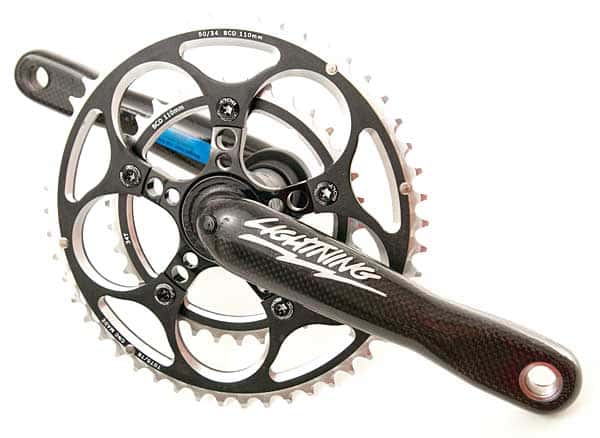ITTY wrote:Nice review/comparison. Although as an engineer, I found the strain energy analysis a lot more interesting. Theoretically, almost all of the energy stored in the cranks will be returned to the drivetrain. The only time I think stiffness is actually a real benefit is for very hard efforts and sprinting, which happens a lot in road racing. However, I don't think stiffness is really a big deal for something like a time trial bike.
For what it's worth, I agree completely. I actually don't think it's a big deal for sprinting, either. And even if it was, all riders experience similar losses, so it's hard to tell.
ITTY wrote:Also, IIRC, there is a pretty simple equation for strain energy due to torsion. In order to get the total strain energy, you can just add up U_bending+U_torsion. I suspect quite a bit of deflection from most cranks is due to torsion (due to tall+thin cross sections), so focusing on bending probably wouldn't be a very accurate model.
Yes, indeed. But this article was intended for non-engineers, and, in terms of accessibility, I thought even a single strain energy equation was pushing it.
You could simply use superposition to combine bending and torsional strain energies and get a decent approximation. But that implies that you're riding a prismatic crank, and very few cranks out there have the same cross sections along their lengths. (Maybe Rotor is an exception).
Of course, you could just take an integral to capture the shape change along the length and plug that into your strain energy equation. But the crank's shape is three-dimensional, so you'll need at least a double integral (and maybe a triple integral, depending on how rigorous you're being). On top of that, the math isn't the hard part; rather, it's finding an equation for the line(s) describing the cranks. And a composite crank would add several layers (ha!) of complexity on top of that.
Very quickly, it becomes clear (to me, at least) that (a) all of the above is too complicated for a non-engineer, non-physicist audience, and (b) that FEA is a faster way to quantify strain energy than hand calcs for any real-world crank shape.
Cheers,
Jason










